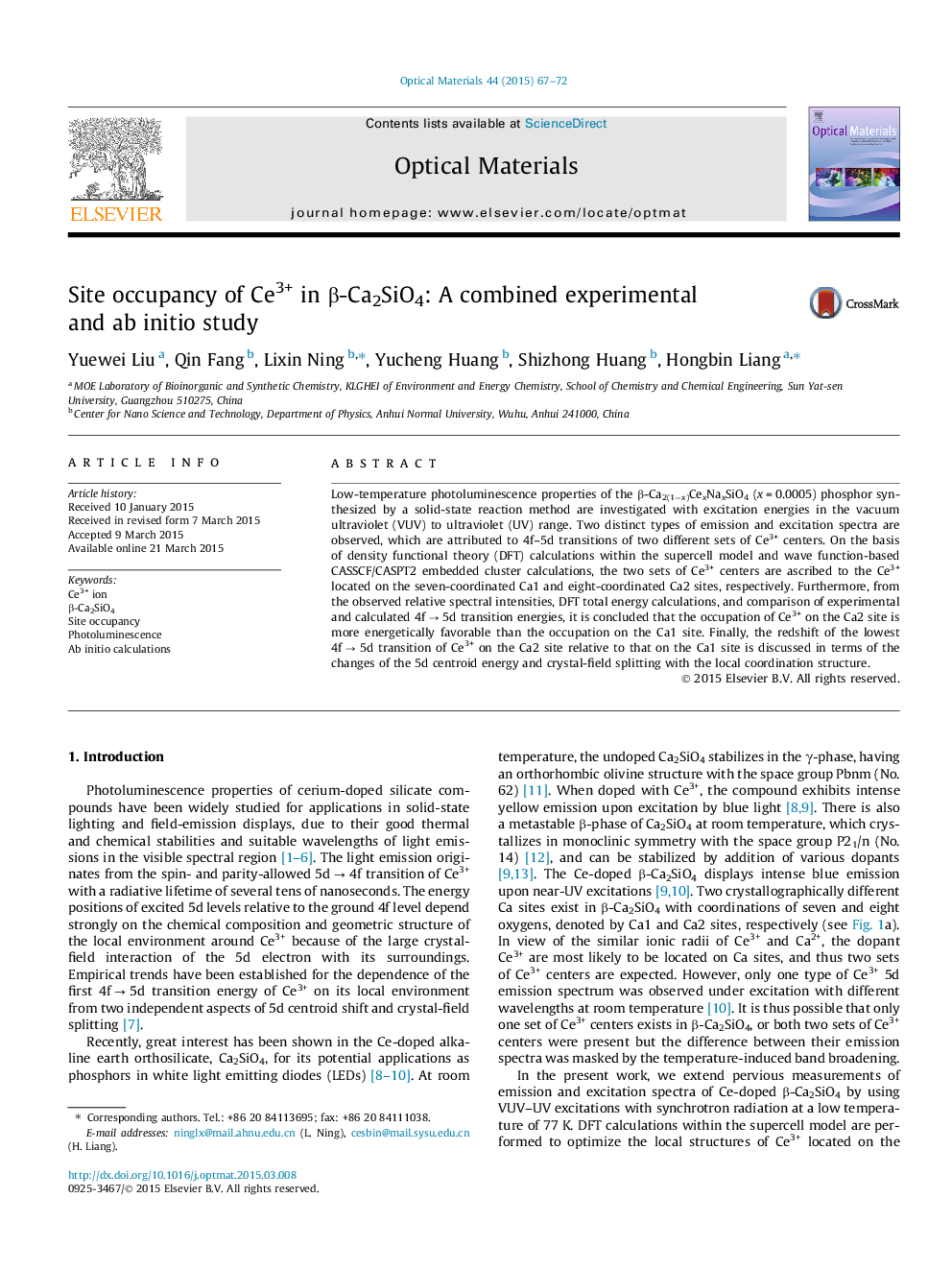| Article ID | Journal | Published Year | Pages | File Type |
|---|---|---|---|---|
| 1493896 | Optical Materials | 2015 | 6 Pages |
•Site occupancy of Ce3+ in β-Ca2SiO4 was studied by spectral and ab initio methods.•Two distinct Ce3+ sites were revealed by experimental spectral measurements.•The two Ce3+ sites were identified as Ce3+ on Ca1 and Ca2 sites of β-Ca2SiO4.•The Ce3+ ions prefer to occupy Ca2 sites over Ca1 sites in β-Ca2SiO4.•The change of the lowest 4f→5d transition energy from CeCa1 to CeCa2 was analyzed.
Low-temperature photoluminescence properties of the β-Ca2(1−x)CexNaxSiO4 (x = 0.0005) phosphor synthesized by a solid-state reaction method are investigated with excitation energies in the vacuum ultraviolet (VUV) to ultraviolet (UV) range. Two distinct types of emission and excitation spectra are observed, which are attributed to 4f–5d transitions of two different sets of Ce3+ centers. On the basis of density functional theory (DFT) calculations within the supercell model and wave function-based CASSCF/CASPT2 embedded cluster calculations, the two sets of Ce3+ centers are ascribed to the Ce3+ located on the seven-coordinated Ca1 and eight-coordinated Ca2 sites, respectively. Furthermore, from the observed relative spectral intensities, DFT total energy calculations, and comparison of experimental and calculated 4f → 5d transition energies, it is concluded that the occupation of Ce3+ on the Ca2 site is more energetically favorable than the occupation on the Ca1 site. Finally, the redshift of the lowest 4f → 5d transition of Ce3+ on the Ca2 site relative to that on the Ca1 site is discussed in terms of the changes of the 5d centroid energy and crystal-field splitting with the local coordination structure.
